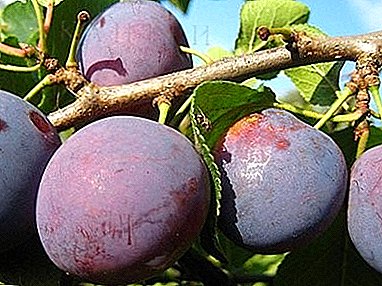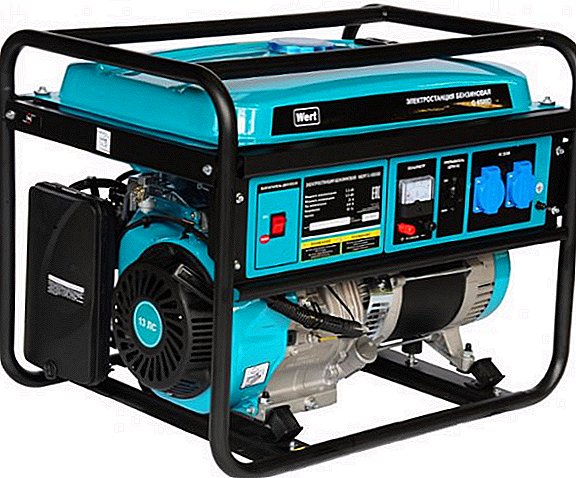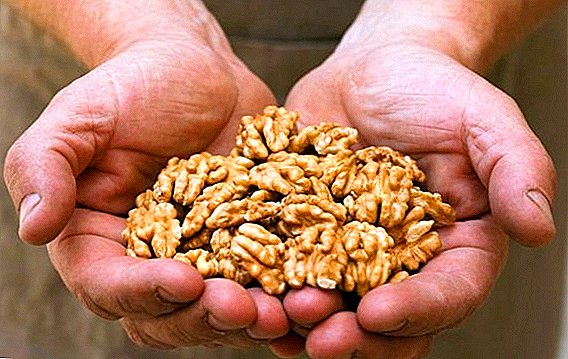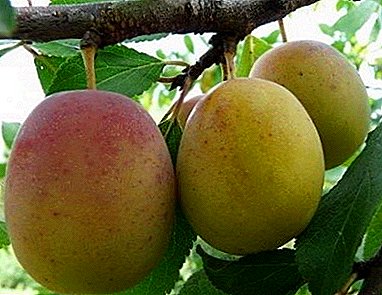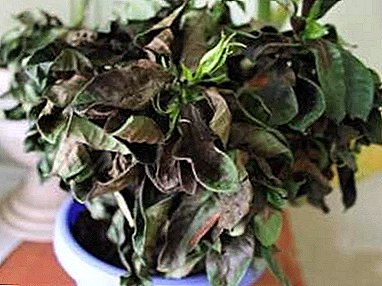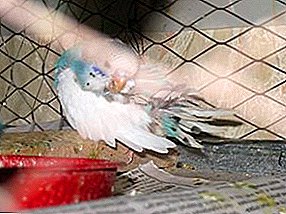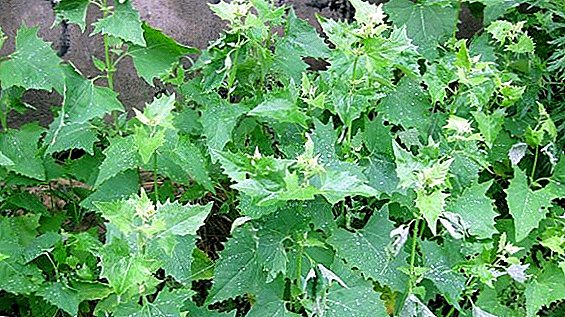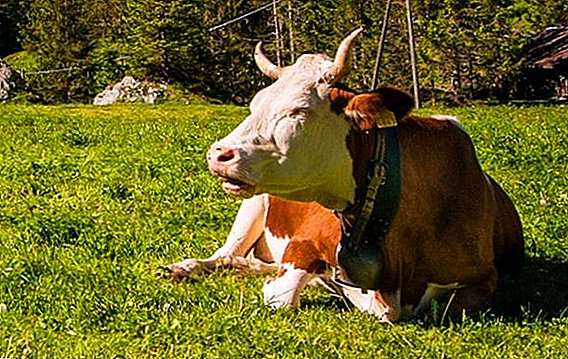 Cattle sweating can be both individual (such is the peculiarity of this particular animal) and pathological.
Cattle sweating can be both individual (such is the peculiarity of this particular animal) and pathological.
Therefore, in the presence of sweat in cattle, it is recommended to examine it for clinical deviations.
To do this, you need to know for what reasons a cow can sweat, and what preventive measures exist.
Cow sweating
Sweating is a vital physiological process that provides a healthy body thermoregulation. In moderation, cow sweating is a normal pattern. If there is increased sweating (hyperhidrosis), the owners should look at the condition and behavior of the animal. 
Why does a cow sweat
Hung sweating can be a sign of a serious illness. If you notice it in time, then it is often easily cured, so it is better to know in advance what kind of pathology hyperhidrosis can talk about.
When growing cattle, it will be useful for you to find out why a calf and a cow gnash their teeth, why a cow gets kicked at milking, why a miscarriage happens to a cow, how to pick up a cow after giving birth to a cow, why a cow is drooling, how to wean a cow.
Traumatic reticulitis
Along with food, a foreign body can get into the stomach and often it is metal objects (nails, wire). Most often, they, along with food move through the intestines and excreted in the feces.
But it happens that the object gets stuck on the surface of the grid (the stomach section of ruminants), which disassembles the feed particles in size and sends them to the secondary chewing.
When contractions of the digestive system, wire or nail injures adjacent organs (liver, heart shirt, etc.), causing pericarditis, peritonitis, or hepatitis.
In such a situation, the animal shows anxiety, arches its back, becomes in unnatural postures, moans mournfully. As a result, it loses weight, gives less milk, and medications do not help. The hair on the neck and under the breast is constantly wet and disheveled.
When the skins are pulled back at the withers, the cow arches the back. Such an illness can last for several months and ends with either culling the animal or its death.  In order to eliminate traumatic reticulitis, you should clean the walking places from scrap metal and shake up the baled hay before feeding.
In order to eliminate traumatic reticulitis, you should clean the walking places from scrap metal and shake up the baled hay before feeding.
Did you know? Cows began to be domesticated over 8000 years before our era on the territory of the Eurasian continent, moreover, they “worked” on Hindustan from zebu, and on tour in Altai and in Front Asia.
Contagious diseases
Excessive sweating may indicate that a cow has caught an infection. The animal is in pain, so it sweats intensely.
Hyperhidrosis is observed in such diseases:
- bronchopneumonia;
- bronchitis;
- pneumonia;
- tuberculosis;
- leptospirosis;
- leukemia;
- salmonellosis;
- brucellosis;
- fascioliasis;
- cysticercosis;
- echinococcosis;
- cardiac pathologies (pericarditis, myocarditis);
- gastritis;
- enteritis;
- hepatitis;
- infections of the uretogenital direction (nephritis, cystitis, endometritis, etc.).
 Almost all of these pathologies are accompanied by inflammatory processes and an increase in the body temperature of the animal (up to 39.5 ... 40 ° C).
Almost all of these pathologies are accompanied by inflammatory processes and an increase in the body temperature of the animal (up to 39.5 ... 40 ° C).In addition, infectious diseases are characterized by the following symptoms:
- dyspnea;
- change in heart rate (too slow or rapid heartbeat);
- the presence of edema;
- wheezing;
- discoloration of mucous membranes (redness, yellowness, pallor);
- fast fatiguability;
- refusal of food and decrease in a lactation;
- the animal is in pain.
Did you know? In ancient times, cows were the measure of wealth, and cattle theft - one of the oldest types of theft.
Overheat
Sometimes farmers notice sweat on the cow in the morning. This may mean that the animal’s body lacks cobalt and vitamin B. A biochemical blood test will help to cope with this problem. If an imbalance is found, then appropriate vitamin-mineral complexes are assigned.
And it happens that sweating not only does not stop, but continues constantly. Then the reason may be the temperature factor - the animal is just hot. Cows feel comfortable at + 15 ... +20 degrees.  If the room temperature rises to + 25 ... +30 ° C, the animal begins to feel discomfort. At these temperatures, it begins to sweat and suffer from the heat. To avoid overheating, the fans are switched on already at + 20 ° C.
If the room temperature rises to + 25 ... +30 ° C, the animal begins to feel discomfort. At these temperatures, it begins to sweat and suffer from the heat. To avoid overheating, the fans are switched on already at + 20 ° C.
Stress
When mistreating, shuffling the herd, moving cows, as well as during the control weighing, some animals get scared and, as a result, sweat a lot. The same symptoms are observed as a result of injury or after heavy calving.
Important! During morning milking, cows can sweat. This is considered perfectly normal.
Acobaltosis
Soils in some regions are poor in various microelements. Consequently, the vegetation in this area also does not contain all the complex of substances needed by the cows. With a lack of cobalt anemia develops, one of the signs of which is excessive sweating.
To combat acobalt, cobalt salts are added to the feed or a course of injections of cyanocobalamin is given.
Alimentary diseases
One of the main causes of hyperhidrosis are diseases of the alimentary tract, generated by food poisoning. If the rules for storing food are not followed, it overheats and mycotoxins producing fungi appear on its surface.  Often such situations are accompanied by the revival of barn mites, the excreta of which are powerful allergens for cows.
Often such situations are accompanied by the revival of barn mites, the excreta of which are powerful allergens for cows.
Since it is not always possible to comply with the requirements for storing grain, feed is regularly analyzed by quality indicators. In order that fodder did not spoil, it is possible to apply oxidizers.
The second cause of poisoning is the use of industrial waste - meal, bards, cake. Often, these components go to feed animals, while completely ignoring their shelf life.
Intoxication can also occur as a result of eating poisonous plants on the run, as well as if grain wastes with seeds of poisonous weeds are used for feed.
Important! In each case, prescribe a different treatment. Only a veterinarian can do this.
Preventive measures
Preventive measures are to create optimal conditions for living both young and adult cows. The room must be equipped with ventilation and a special microclimate must be maintained.  At the same time, animals need to be properly fed: useful ingredients should be added to the feed, as well as its quality should be monitored.
At the same time, animals need to be properly fed: useful ingredients should be added to the feed, as well as its quality should be monitored.
Summing up, we note that when a cow sweats, it signals the hosts that there are problems with her health, and usually all diseases can be treated. However, do not forget about prevention, because it is easier to prevent than to cure.


